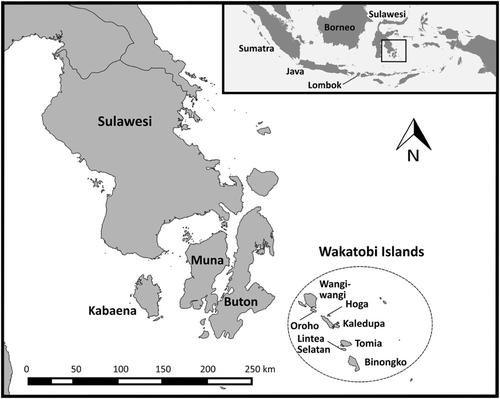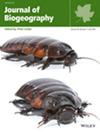Wallacea is a global biodiversity hotspot and Sulawesi is the largest island in this region, notable for a high proportion of endemic species. The Wakatobi archipelago, off the southeastern peninsular arm of Sulawesi, is home to several endemic bird species. Although islands are known to influence the morphology of their resident species, competitive interactions also exert strong influences on morphology. Here, we consider the contributions of both islands and competitors on two morphological traits of two bird species in a small passerine guild found on the Wakatobi islands.
Wakatobi archipelago, Sulawesi Tenggara, Indonesia.
Wakatobi White-eye (Zosterops flavissimus) and Wakatobi Sunbird (Cinnyris infrenatus).
Working with morphological measures (from netting studies), population density metrics (from transect surveys) and fundamental data from islands (area, distance from mainland and elevation), we investigated (by means of multiple linear regression) which terms best explained variation in the body size and bill size of two small passerine birds endemic to the Wakatobi islands.
Both island metrics and competitor presence/density were useful in describing the variation in body size of both bird species. However, only competitor presence/density was useful in describing variation in bill size of the birds. The best models describing variation in these traits included terms representing both interspecific and intraspecific competition.
Our findings indicate that simple island metrics may be useful in predicting some of the variation in some functional traits of island species. However, in this example, simple island metrics were insufficient to explain the full variation in body size of endemic birds across the Wakatobi archipelago and were of no use in predicting the variation in their bill size. As bill morphology frequently dictates diet and feeding niche, it is a trait which may determine population divergence and speciation. If simple island metrics fail to describe such diversification, it is surely important to capture that information in other ways.



